[ad_1]
Hollyhocks are biennial or short-lived perennials with enormous, pretty blossoms. Must you’ve grown them in your yard, you seemingly know what an prolonged and painstaking course of it could be to attend for them to bloom. This longer-than-average wait makes it far more distressing as soon as we see that pests are consuming our crops.
The first time I planted hollyhocks, I had no thought what to anticipate. I believed that they need to be fast growers because of they’re reasonably large as soon as they flower. You’ll take into consideration my disappointment after I found that they wouldn’t bloom the least bit that first yr. It takes loads of endurance to develop them.
I need that I could inform you that there aren’t many bugs which have a method for hollyhocks. Sadly, as with many crops inside the mallow family, they’re customary meals for lots of kinds of wildlife. Let’s talk about some pests it is potential you will encounter in your hollyhocks and the way one can deal with them with out missing out on these dazzling flowers.
Hollyhock Weevil
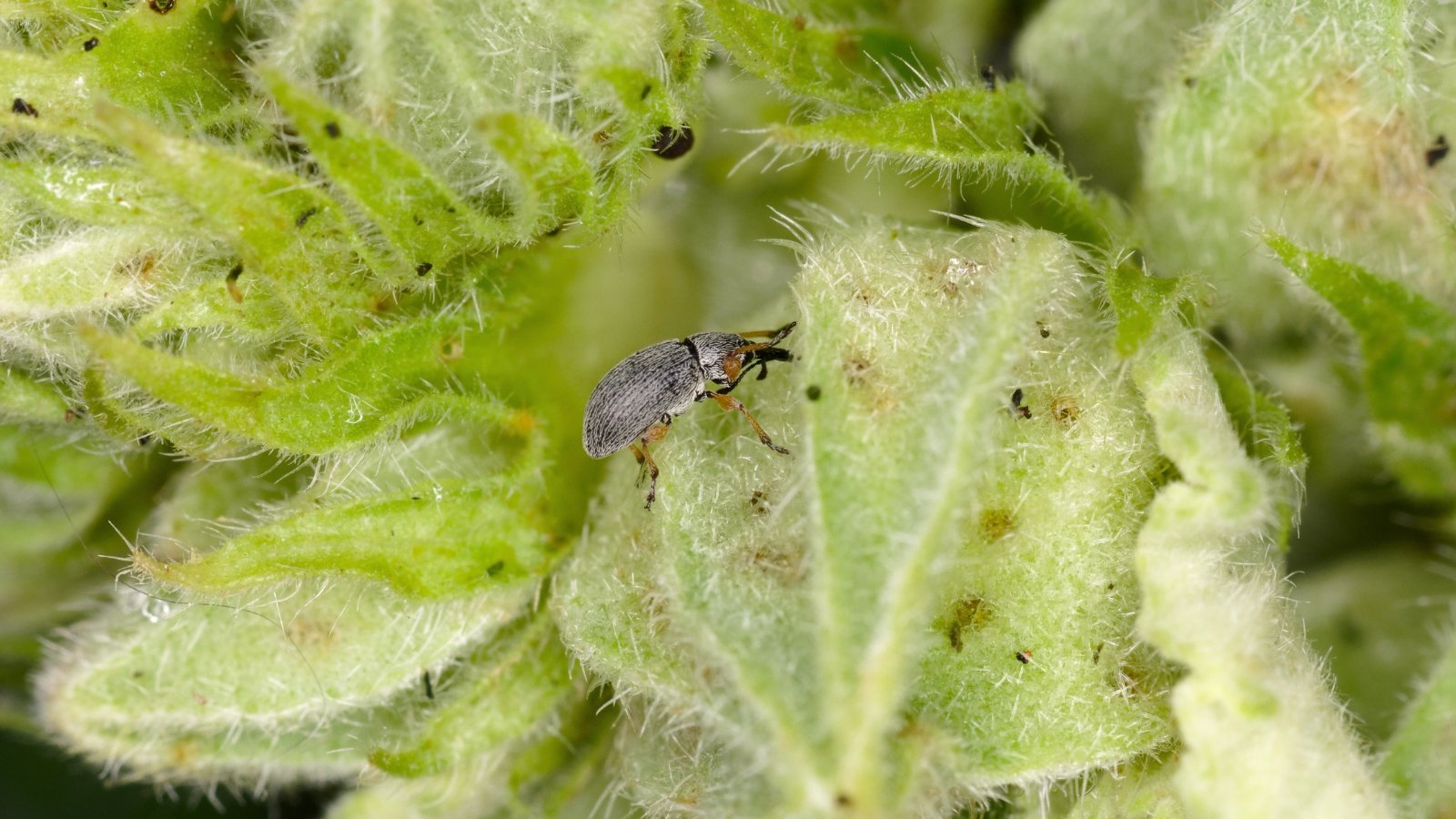

The hollyhock weevil is a night-feeding pest with a alternative for these pretty crops. They’re small, black beetles with orange or tan legs and an prolonged snout. The females are about 1/4″ prolonged (along with their snout) and the males are about half that measurement.
You’re most positively to see harm from weevils within the summertime months; they peak in June and July nonetheless can proceed to place eggs until September. They might munch on leaves first, leaving them with a lacy look.
When buds type, females puncture them to place their eggs inside. About three days later, the eggs hatch and tiny white grubs get to work. They burrow into the seed pods and feed on forming seeds.
Weevils are energetic at night, so that’s the prime time for determining these pests. Keep a sheet of paper beneath the affected part of the plant and shake. The bugs will flip into dislodged and fall off. It is also potential to find out them by the harm they set off to leaves and puncture marks on the underside of buds.
These weevils solely produce one period per yr. As quickly because the larvae pupate, the adults drop to the underside and overwinter beneath the soil. Weevils obtained’t set off harm to your flowers. Nonetheless, they’re going to shorten the lifetime of the plant and cease it from re-seeding.
Hollyhocks are short-lived perennials, so within the occasion that they don’t re-seed, you’ll should plant them every two years to keep up them inside the yard. One of many easiest methods to forestall a model new period of weevils from cropping up subsequent yr is to remove the seed pods sooner than they mature. Immerse them in a bowl of soapy water to kill the grubs.
You’ll select the grownup weevils off by hand at night and drop them in a bowl of soapy water. This can be tedious, though, and must you miss some, you proceed to have a difficulty. Neem oil is environment friendly in direction of weevils, and so is insecticidal cleansing cleaning soap.
Must you deal with to eradicate the larvae sooner than they demolish the seeds, you’ll allow your hollyhocks to re-seed. If not, it’s best to remove these seed heads and do away with them sooner than they mature. It’ll dramatically reduce the number of crops you should have subsequent yr, nonetheless it’ll moreover reduce the number of weevils to take care of.
Japanese Beetle
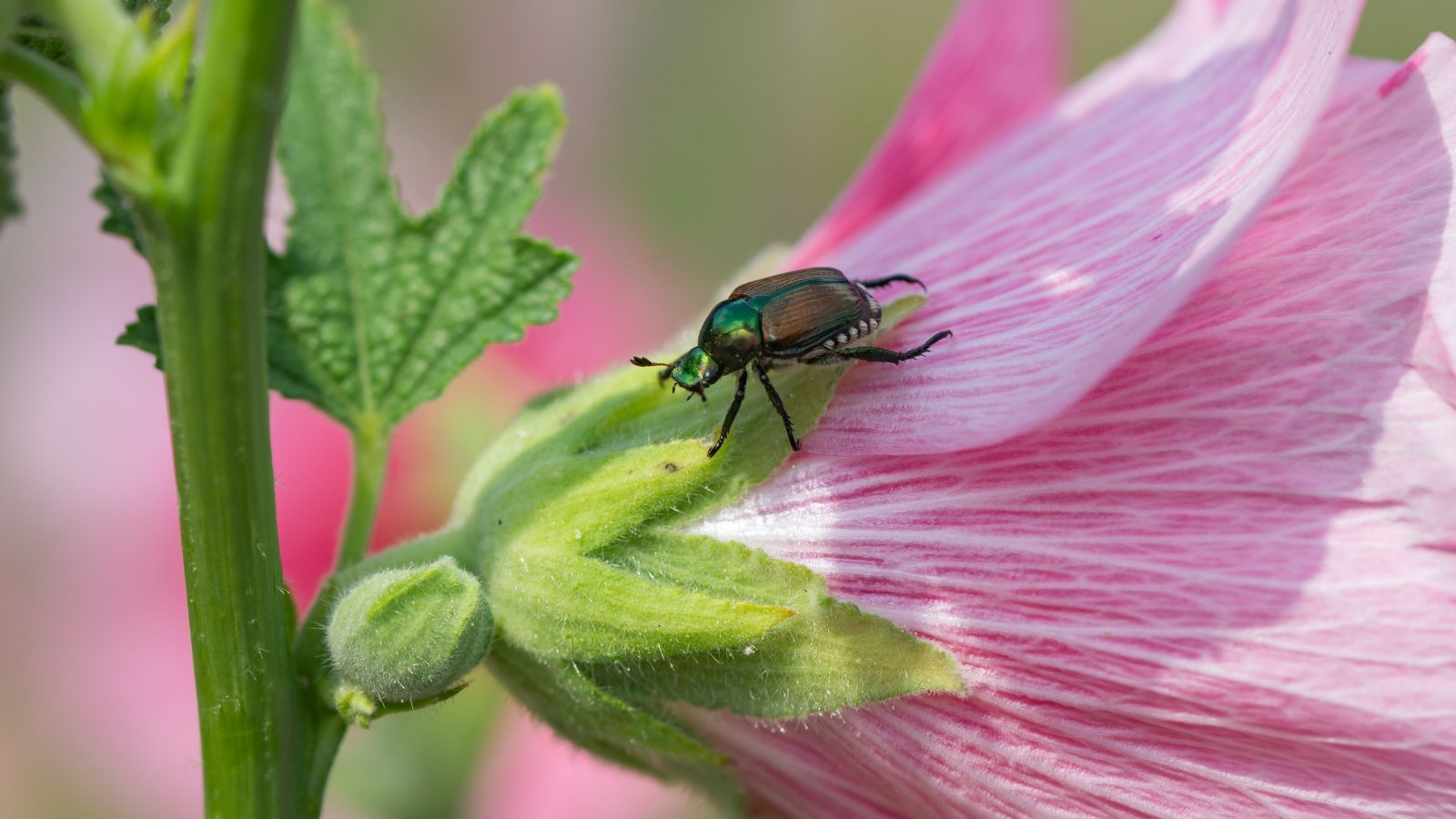

This invasive species is a matter for a few sort of plant. Japanese beetles don’t discriminate so much inside the yard. The adults feed on tons of of species of crops, consuming on fruit, flowers, and foliage. Their larvae, or grubs, select to chew on the roots of your grass, ruining that backyard you should have labored so laborious to care for.
Japanese beetles are native to Japan, the place they don’t pose a whole lot of a menace. Launched within the USA inside the early 1900s, they proliferated proper right here and are literally an issue for gardeners in every East Coast state in addition to Florida. They proceed to maneuver West by the 1000’s and 1000’s.
Grownup Japanese beetles are easy to find out. They’re large at as a lot as 1/2″ prolonged and have a metallic inexperienced head and bronze wings. They’ve a fuzzy abdomen beneath their wings with black and white markings. I imagine they’re pretty, nonetheless I keep in Florida, so my opinion doesn’t rely proper right here.
Their larvae are normally not pretty. Rising from about 1/8″ to an inch prolonged, these cream-colored crawlers look like your run-of-the-mill grub. They’ve a specific pattern on their underside. The grubs aren’t a difficulty for hollyhocks, nonetheless the adults are.
Beetles will trash the foliage of your crops, leaving them brown and chewed up. They feed on nearly every part of the plant, leaving your crops worse for placed on, and damaging pollinator homes and meals present.
One of many easiest methods to deal with Japanese beetles is prevention. Heading them off on the larval stage is possible. You’ll be able to do that by attracting birds to the yard which is ready to eat them. Stay away from watering your backyard between June and August, that’s the time beetles lay eggs inside the soil, and they also need moisture to survive. Fewer eggs suggest fewer bugs.
Must you start to see these guys current up inside the yard, you’ll select them off by hand and drop them in soapy water. This will likely sound morbid, nonetheless must you depart the ineffective beetles lying throughout the yard, this could help to discourage others.
Beetle traps work, nonetheless remember to set them up away out of your favorite crops, because of they do enchantment to the bugs.
Use helpful nematodes (Heterorhabditis bacteriophora) to remove larvae. Apply two of these therapies two weeks apart in temperate fall or spring local weather. The nematodes will prey on any larvae that managed to make it by way of the summer season season. You’ll solely should address adults inside the coming season.
Thankfully, Japanese beetles uncover certain scents to be repellant. No need to make use of a pesticide. Companion plant some garlic collectively together with your hollyhocks as a deterrent or spray with a solution of cedar oil and water.
Sawfly
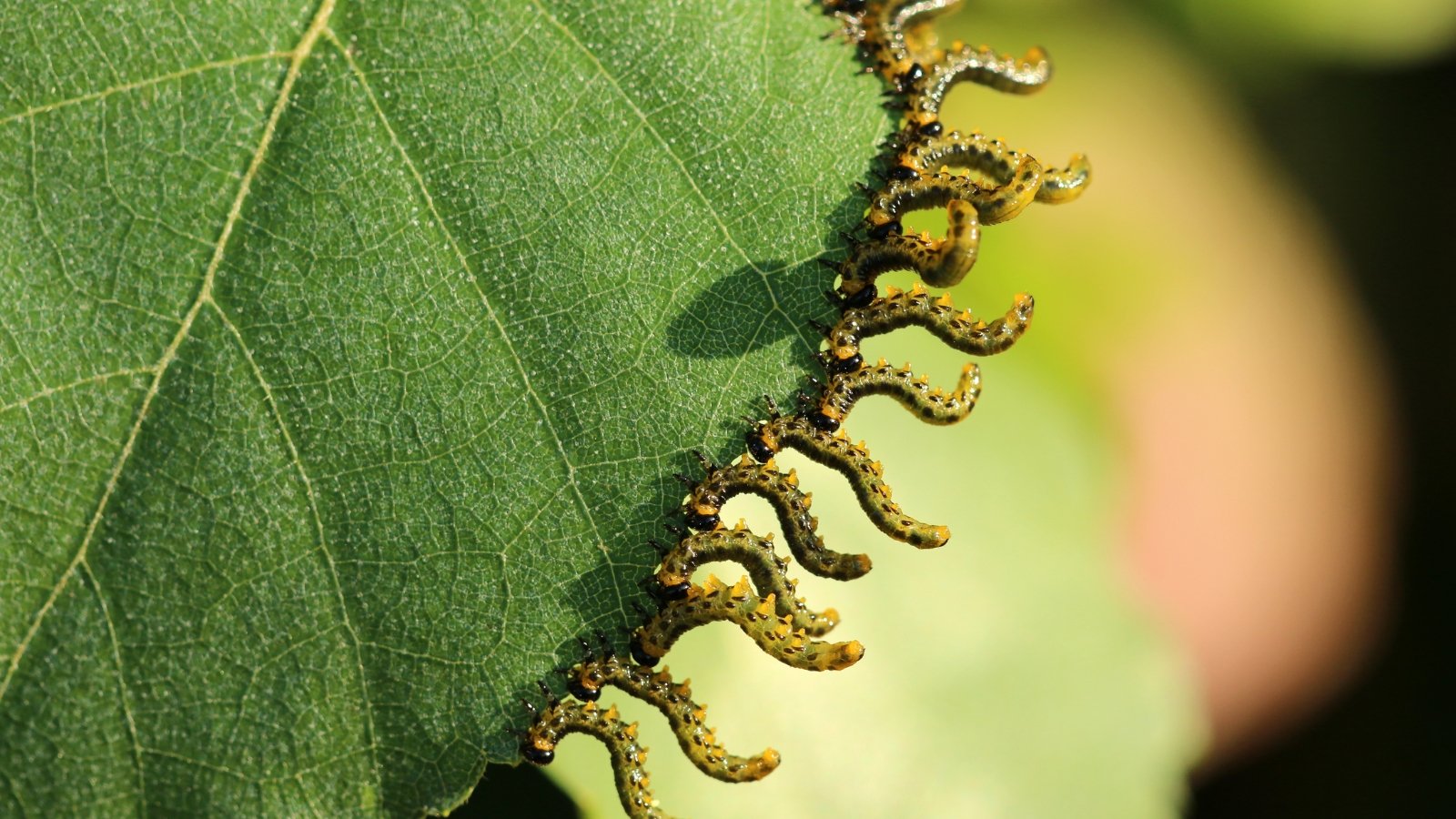

Elevate your hand must you’ve ever gone to battle in direction of sawfly larvae! I do know merely how aggravating these pests will likely be and the best way so much harm they’re going to do. Sometime, your leaves shall be healthful, inexperienced, and durable. The following, a brown, hole-covered mess.
Sawflies are widespread yard pests that use their saw-like ovipositor to cut into leaves the place they lay their eggs. Grownup sawflies aren’t a whole lot of an issue to foliage, nonetheless their larvae are brutal. They will skeletonize a leaf in a short time the least bit, they work in groups, and they also eat masses. The good news is that ought to you catch them, it’s easy to dispose of them. They don’t have to be a dying sentence.
Sawfly larvae are easy to ID. You’ll see indicators of them right away, as they skeletonize the leaves of your crops, seemingly in a single day. Must you uncover this happening to a plant, flip over a leaf that is solely half devoured. Small black and brown larvae look like tiny caterpillars. They usually work in groups, defoliating one thing inside attain.
The perfect prevention for sawflies and their larvae are pure predators. Enchantment to bugs like lacewings to the yard by planting quite a few nectar-rich flowers. The larvae of ladybugs and lacewings will knock out an infestation earlier than you’ll, and additional utterly.
Hand elimination is environment friendly for these pests. You’ll try selecting them off by hand, nonetheless I prefer to suggest pruning instead. When you see indicators of them on a plant, start making an attempt under leaves and reduce off any leaves the place you uncover them. Get rid of the leaves away from totally different crops. Chickens prefer to eat these pests.
It is also potential to mud your crops with diatomaceous earth or kaolin clay to dispose of and deter sawfly larvae. You’ll should reapply every in humid climates and after rain. I typically discourage utilizing pesticides ought to you’ll be able to help it, as these kill helpful bugs with the harmful ones. This can throw off the steadiness and depart you with even bigger factors. Nonetheless, neem and horticultural oils work.
Caterpillar


On the subject of caterpillars, I undertake a “live-and-let-live” perspective. Nonetheless, it is potential you will uncover them very irritating, and technically, they’re an insect that eats hollyhocks, so we should all the time in any case decide them.
Hollyhocks are a host plant for the painted lady butterfly. They lay their eggs on the leaves, and as soon as they hatch, their larvae feed on them. It is essential to make this dedication to your self. As an avid pollinator fanatic, I am ready to sacrifice foliage for butterflies. Nonetheless I understand that not all people feels that method, so we’ll take care of them as pests, all of the similar.
Painted lady butterflies are pretty little points. They are a small species with orange and black wings and white markings. Must you see them hanging spherical your crops, you’re liable to have some caterpillars hatching in barely under per week.
The caterpillars are small and gray with black markings and hairs that stand out in little spikes all through. As well as they’ve faint yellow striping that runs horizontally all through their our our bodies. They usually start on the sides of leaves and depart little behind nonetheless the central rib.
Prevention is troublesome. Butterflies are occupied with nectar-rich flowers. You’ll on a regular basis take care of your full yard with systemic pesticides, nonetheless pollinators are the backbone of the flower yard. With out them, we don’t have nearly as many flowers. They obtained’t damage the flowers, solely the foliage and their presence means you’ll have additional crops inside the coming years.
Ought to it’s best to, hand elimination is the simplest method to eradicate caterpillars. They may look a little bit of intimidating with their spiky clumps of hair, nonetheless they’re completely harmless to the contact. Merely pluck them off and relocate them. Or, do away with them in your chosen methodology.
Scale
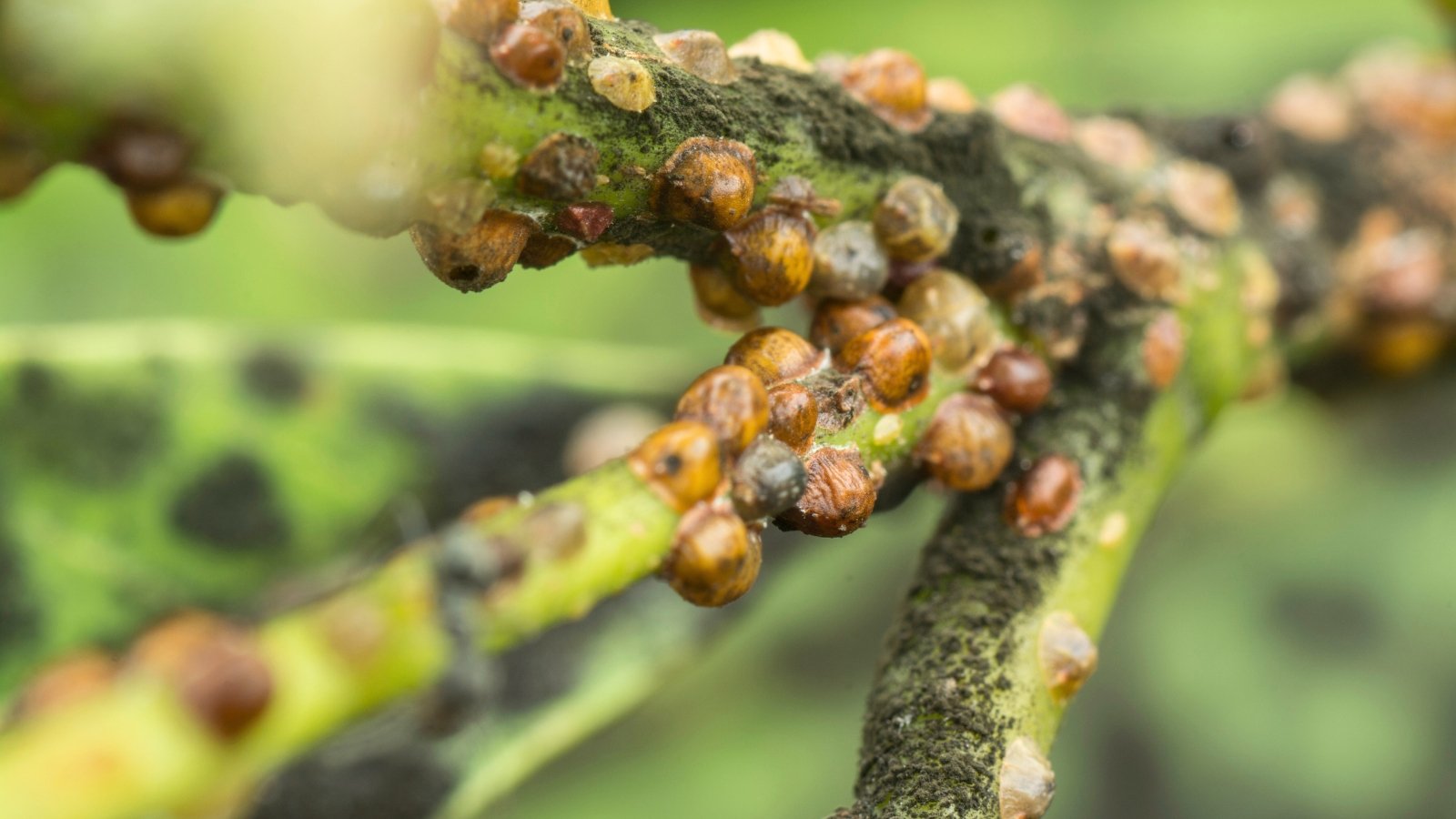

Scale bugs, nonetheless, haven’t any pretty butterfly stage. I’ve no affection for these uncommon little pests which are usually proof towards standard methods. Scales are widespread yard pests that congregate on stems and under leaves, really wherever on the foliage. They pierce the membrane and suck out the sap, depleting the host of nutritional vitamins and moisture.
The severity of the harm relies upon upon the sort of scale, and the best way plentiful they’re. Some can kill a plant in a short while, whereas others couldn’t do any extreme damage. That’s not a chance I favor to take, so I dispose of them after I see them.
Some scales look like tiny, gelatinous blobs affixed to leaves. You most likely obtained’t see them transferring spherical so much, because of as quickly as they latch on they spend most of their time feeding. They generally tend to cluster up in groups, which makes them easier to find out. They’re usually brown, yellow, tan, or white.
One of many easiest methods to forestall these bugs is to observe good hygiene. Clear up throughout the bottom of your beds and recurrently look at for indicators of pests. A sticky excrement known as honeydew is usually leftover on the leaves and stems these guys munch on. Black sooty mildew can develop on this honeydew, inhibiting photosynthesis and extra harming the plant.
Enchantment to helpful bugs to the yard with a great deal of nectar sources. These predators do the simplest job of preserving your yard pest populations down with out harsh chemical substances. Lastly, keep your crops strong. This style they’ve a better chance of withstanding the harm until you eradicate the scales.
Making use of broad-spectrum pesticides is not a hottest methodology with these or any pests. The reason is that moreover they kill the populations of helpful bugs. Then you have no pure security from the nuisance bugs.
If the infestation is small and localized, a Q-tip soaked in alcohol is an efficient gadget for elimination. Merely use the cotton swab to wipe them off. If the infestation is additional extreme, neem oil and horticultural oils are legit therapies. Horticultural oil is best utilized in late winter, whereas the scales are dormant. That’s when the crawlers, or youthful scales, are energetic and easy to kill.
Spider Mite
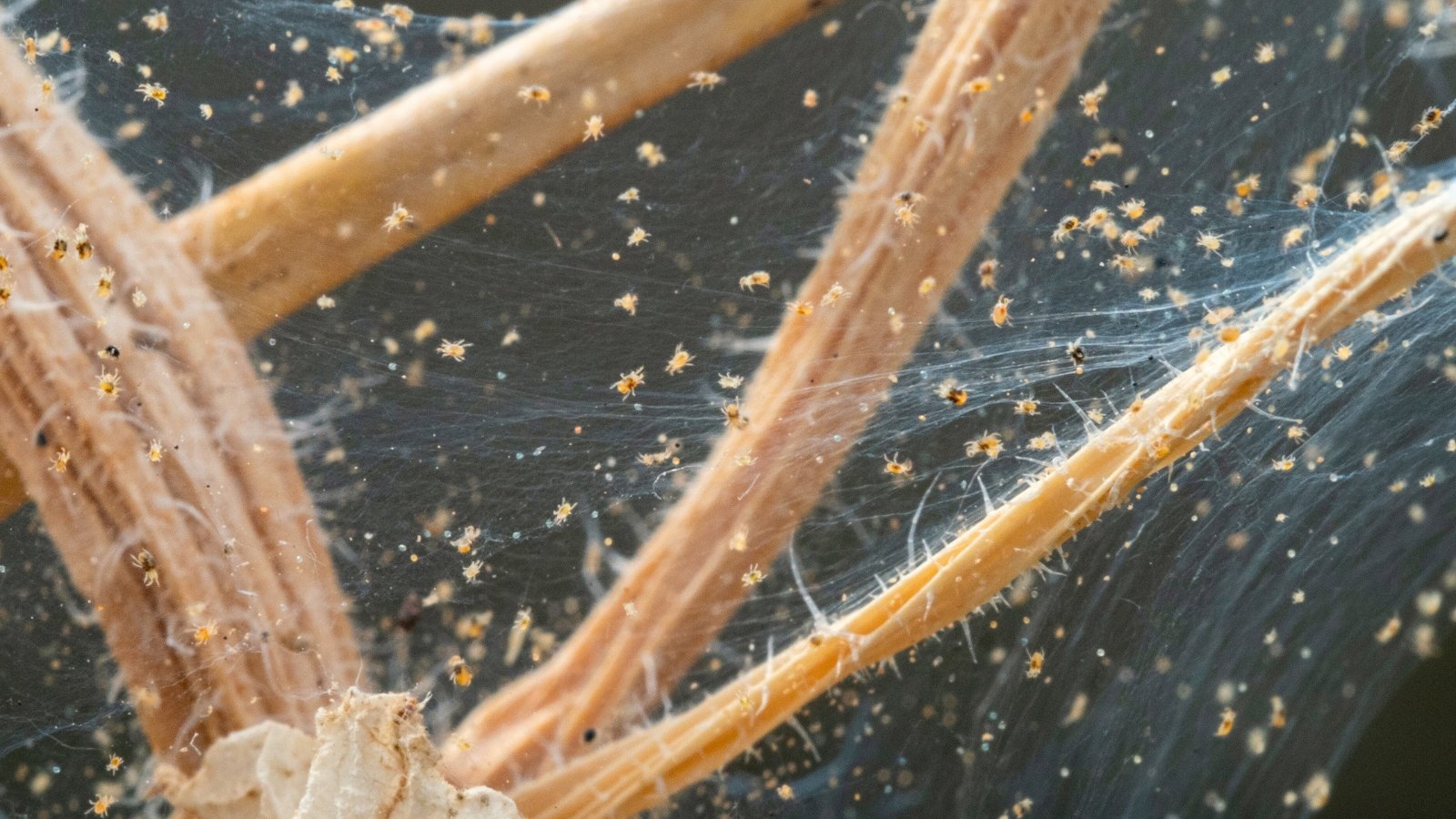

I don’t need a spider mite infestation on any gardener. These pests will likely be notably troublesome on houseplants as a result of dearth of predators inside the residence. They’ve a great deal of pure predators inside the yard, in order that they don’t take over within the similar method, nonetheless they’re nonetheless a nuisance.
Spider mites set off comparable factors to scales. They pierce the membranes of the leaves and suck out the sap, damaging complete effectively being. They’re so tiny, that they usually go unnoticed until the harm turns into obvious. A small infestation is unlikely to harm a mature hollyhock, nonetheless an enormous infestation can.
On account of spider mites are so small, they’re troublesome to detect on their very personal. Fortunately, they assemble advantageous webbing under leaves and in numerous sheltered areas on the crops they infest. Look inside the junctures between leaves and stems, and totally different places that may provide shelter. Must you see this webbing, you seemingly have spider mites.
In terms of what they do to their prey, leaves might flip bronze on prime. Small white or yellow dots might pop up on the foliage. Certain crops might have distorted foliage, notably new leaves. Leaves will drop in late phases.
Good hygiene is important in stopping spider mites. Keep your beds cleaned up and tidy. Spider mites don’t like humidity, so that they’re primarily an issue inside the dry months. Keep your crops watered appropriately, as water-stressed crops are additional susceptible to interrupt.
Spider mites usually is an issue to dispose of as quickly as they arrange a inhabitants on a plant. Misting them with rubbing alcohol is a reliable technique to kill them. Cinnamon, mint, neem oil work too. and Doing this could usually dry out your hollyhocks though, so don’t depart the alcohol on for prolonged.
A strong spray of water will knock down the inhabitants of mites, nonetheless not altogether. Miticides are a better alternative than totally different pesticides, as spider mites can quickly flip into proof towards them.
Mealybug
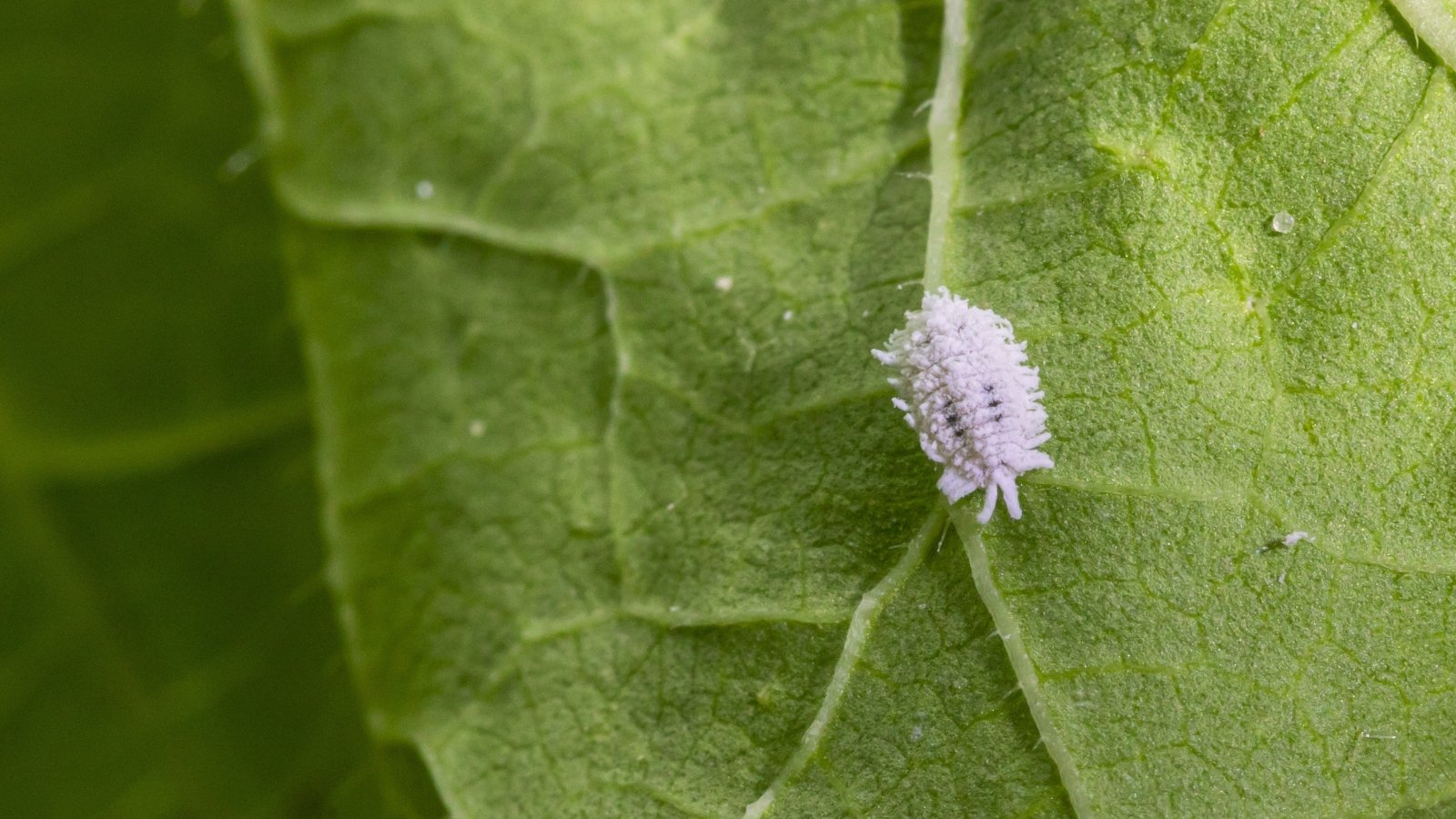

Mealybugs are little white, sap-sucking pests with a fuzzy look. The fuzz is certainly a waxy coating, which makes these bugs additional proof towards pesticides. As one different species of scale, they’ve very comparable habits. They congregate on foliage and depart behind a sticky mess, draining the host of nutritional vitamins. These are a menace to the overall effectively being of the plant and may need to be handled to keep up it alive.
Mealybugs are easy to see and decide, and exhausting to dispose of. They’re small, rectangular bugs that appear to have a fuzzy coating of hair, nonetheless in actuality, they aren’t. That’s their waxy defensive coating. You will discover them in groups alongside stems or under leaves. As well as they tend to cowl in leaf junctures. You’ll uncover cottony loads of eggs on the plant as correctly.
Fortunately, mealybugs have a whole lot of pure predators. Attracting these predatory bugs to the yard will go a long way in direction of stopping an infestation. In reality, I’ve dealt with these guys on a houseplant sooner than, and simply setting the plant outside for a few days took care of the state of affairs.
Always look at new crops that you simply simply introduce to your yard. Simply keep in mind to’re not inadvertently introducing pests along with them. Keep your hollyhocks well-maintained and so they’ll stand up greater to an infestation.
Insecticidal soaps are greater at breaking down the waxy coating than systemic pesticides. Neem oil is one different good remedy for mealybugs. As with some scales, a cotton ball soaked in alcohol could even kill them as you wipe them away.
Key Takeaways
Good hygiene inside the yard is the simplest method to forestall pests from attacking your hollyhocks. Keep the areas beneath your crops tidy, and look at any new crops for indicators of infestation. Hollyhocks are engaging biennials that may flower beautifully with the right care. They’re correctly effectively definitely worth the effort in preserving them pest-free.
[ad_2]
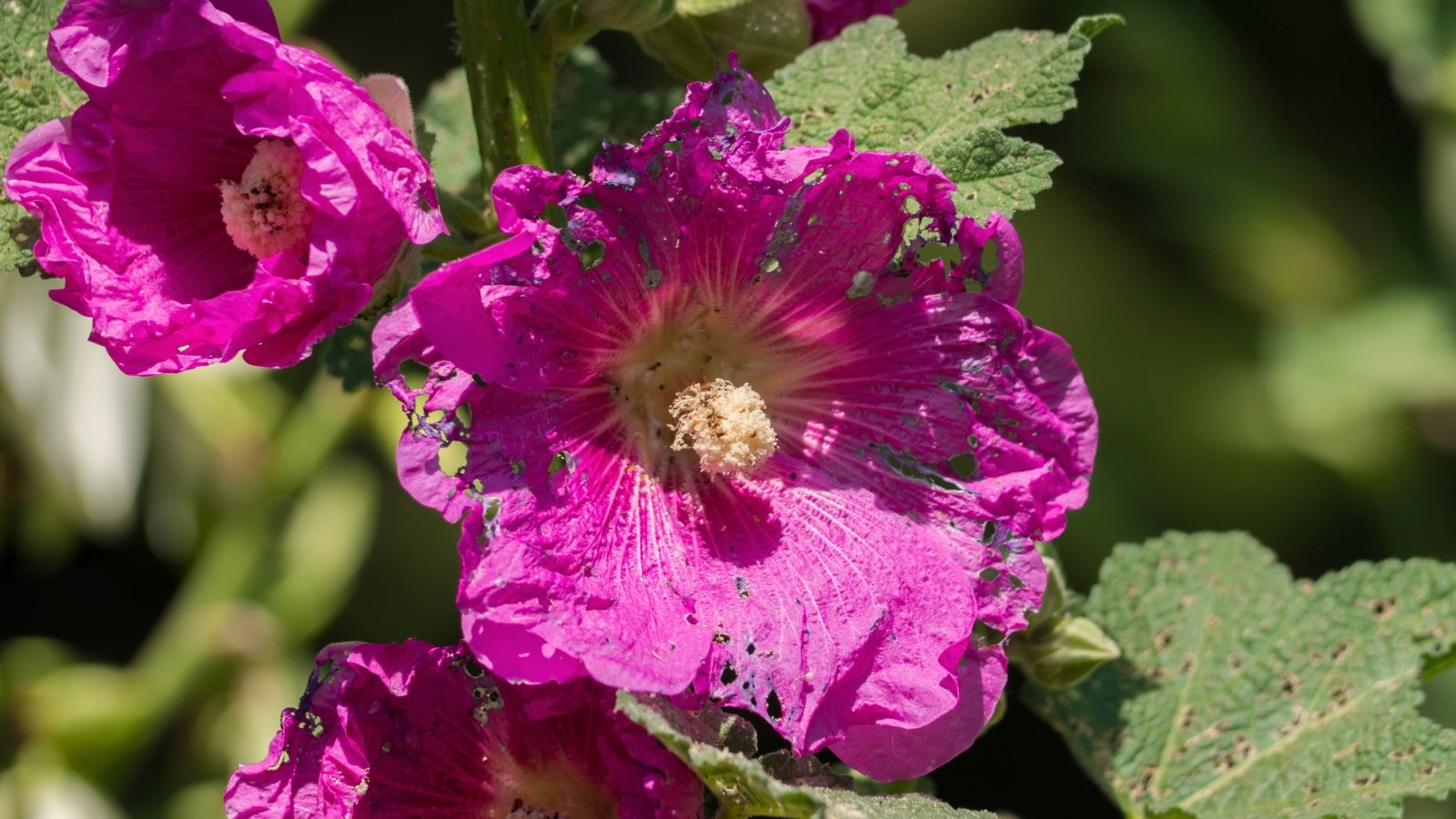
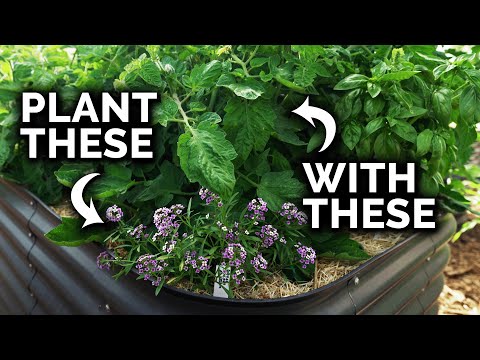
This article highlights important pest management strategies for hollyhocks. I found the tips on hand-picking and using soapy water particularly useful. It’s essential to be proactive in preventing infestations.
I appreciate the emphasis on natural methods to manage pests, such as using beneficial insects and neem oil. It’s crucial to maintain a healthy ecosystem in our gardens while protecting our hollyhocks.
The section about sawfly larvae was particularly eye-opening for me. I never realized how destructive they could be to my plants until now. I’ll definitely keep a closer watch on my garden this season.
The detailed descriptions of each pest are quite helpful. Knowing when they are most active, like the Japanese beetles in summer, can help us prepare better in our gardens. Thanks for the informative post.
It’s interesting to learn about the various pests that can affect hollyhocks. I had no idea about the hollyhock weevil’s lifecycle and how it impacts blooming. This article provides practical advice for gardeners.